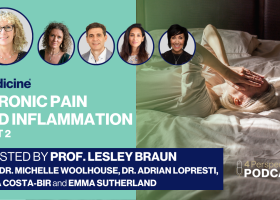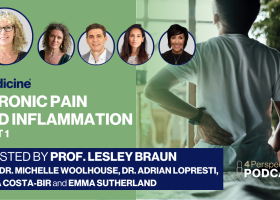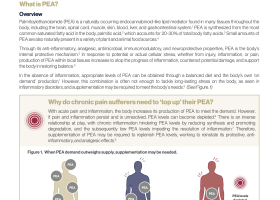Primary tabs
Feeling pain is a natural response of the body to protect further damage to tissues and reduce injury and to allow healing to occur. Pain is an alarm system designed for self-preservation. However, when pain becomes chronic or abnormal, this complex and potentially life-saving function can be disabling, stressful, and incapacitating. Pain can turn into nature’s curse, affecting sleep, work, education, social life, and everyday tasks.1,2
Professor Lesley Braun facilitates a conversation with Dr Adrian Lopresti, Dr Damian Kristoff, Emma Sutherland and Dr Michelle Woolhouse, all from different modalities and perspectives looking at immunity.
Key foundational concepts such as holism and interconnectedness, self care and the importance of convalescence are covered as is a deep dive into key herbs and nutrients to support the immune system.
We hope this helps support you and your patients negotiate this winter season, the seriously cold weather, and arms you with some practical prescribing perspectives.
Keeping informed on ingredients with clinical evidence to support immune system health has never been more important. One unique and naturally derived immunomodulator, Wellmune®, has demonstrated beneficial immune and health effects across multiple population groups.1
The recent resurgence of respiratory infections following the COVID-19 pandemic is a topic of great interest, with the prevalence of viral infections such as influenza and respiratory syncytial virus (RSV) on the rise around the globe.1 With COVID-19 still spreading rapidly in many countries,2 the collision of these viruses has been termed a ‘tripledemic’.3 The incidence of bacterial infections such as Streptococcus pneumoniae and group A Streptococcus have also been increasing.4
Whilst the mechanisms behind the rising incidence of these infections are unknown, current thought amongst experts are around the concepts of immunity debt versus immunity theft.5
The immune system is significantly complex in its physiology and functionality. Maintaining homeostasis involves an intricate interaction between the innate and adaptive immune systems, and the cells, receptors, molecules and chemical substances that comprise these systems.1
This complexity also extends to the impact of many factors on immune function, including diet and nutritional status, lifestyle, physical activity levels, age, stress, microbiome composition, and
physiological and genetic variability.2-4
Following on from Part 1 of our Four Perspectives series, Professor Lesley Braun and our four FX Medicine Ambassadors dive deeper into the therapeutic management of chronic pain and inflammation.
Chronic pain, an insidious and wide-reaching health concern, affects up to 68% of working age people in Australia. The mechanics of chronic pain differ vastly to that of acute pain. Join the discussion in detail with Professor Lesley Braun facilitating the FX Medicine ambassadors in part 1 of Four Perspectives: Chronic Pain and Inflammation.









